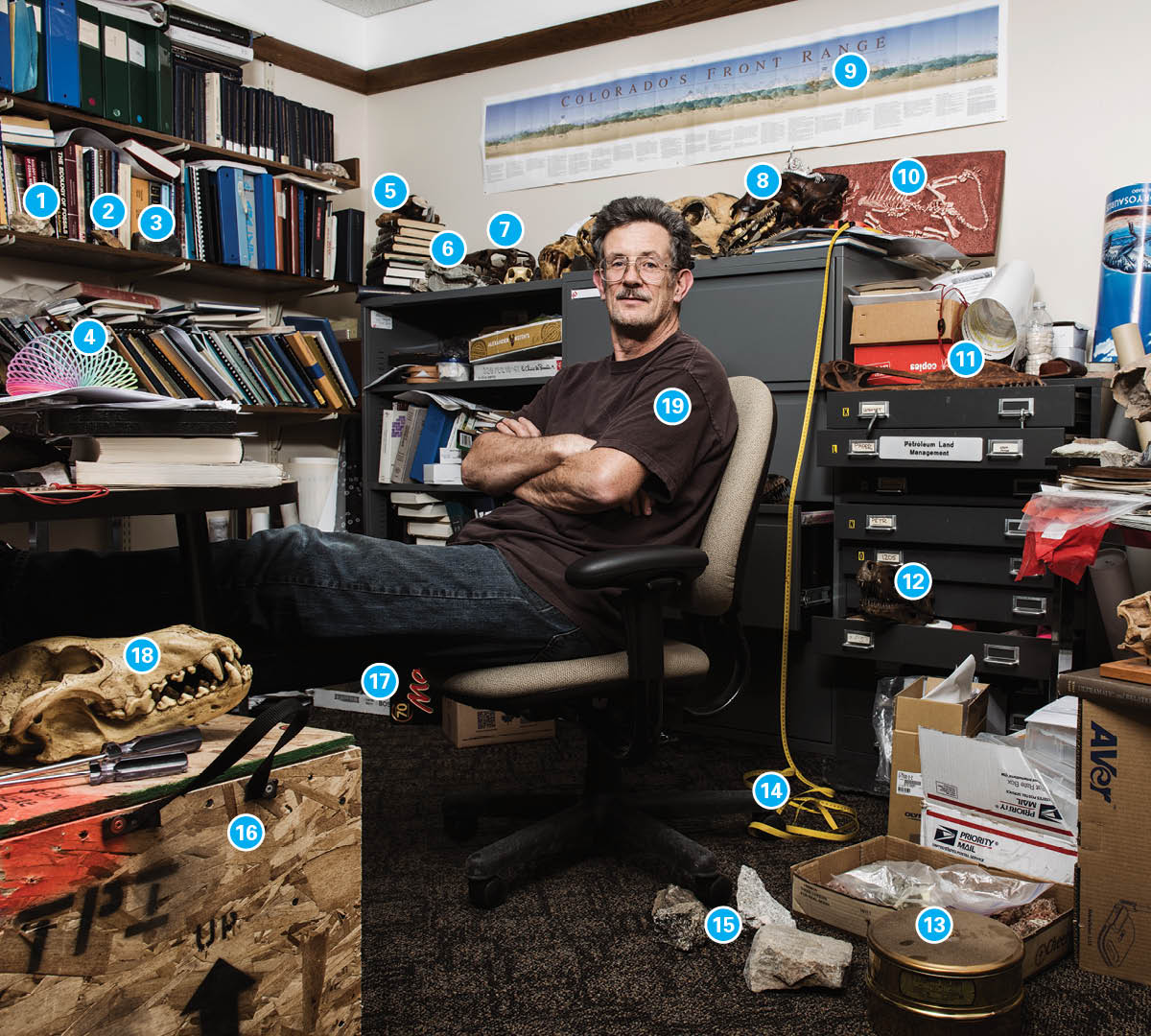
A GLIMPSE INTO THE MINDS AT MOUNT ROYAL UNIVERSITY
THE SOURCE: Mike Clark, Instructional Assistant, Department of Earth Sciences
Spring 2015 issue
We may not be able to show you a literal snapshot of the complex craniums of Mount Royal’s geniuses. However, we can give you a glimpse into their psyche through a look into their often chaotic, yet completely organized (or so they tell us), offices. Our students will be the first to tell you, there are some unique offices on the Mount Royal campus. Some are museum-like, others are bastions of pop-culture memorabilia, while the odd few boast rich libraries of classic works. Summit magazine will continue to feature our most cherished office/think spaces in forthcoming issues!

Clark is Mount Royal’s connect for minerals, fossils, diamond crystals, pyrite, galena, quartz, igneous, sedimentary and metamorphic rocks and a whole lot of skulls.
“I am a scrounge,” he says with a laugh. “I’m a Radar and a Klinger.”
Clark’s job is to prep for labs so students can physically interact with their subject matter. He has personally tracked down samples in the Northwest Territories, British Columbia, Montana, Wyoming, Colorado, New Mexico, North Carolina and Pennsylvania. He occasionally puts things back together, cleaning and assembling damaged fossils, and splits things up, too, sectioning off and polishing slices of meteorite thin enough to be viewable by microscope.
Some of the weirder — and rarer — objects in Clark’s office are: prehistoric cat craniums (Xenosmilus eusmilus), silver and gold tellurides, meteorites about 3 to 4 billion years old and 1.5 billion-year-old banded ironstone from Nunavut.
Admitting to seeing the world a little differently, Clark says he organizes things visually and can always find what he’s looking for. Nominated for the Distinguished Staff Award seven times since 1989, Clark played an integral part in Mount Royal’s Cretaceous Seas Exhibit and is also largely responsible for the campus’ geological Rockscape.
- Dolomite and calcite samples
- Waste rock
- Mineral sample from the Grand Trunk Mine in Colorado
- Slinky, which is used in a geophysics lab. Also involved in this particular experiment are maple syrup, ketchup and canola oil
- Stuffed toy dog. A big animal-lover, Clark has owned 11 dogs in his lifetime, four currently
- Mesohippius (prehistoric horse) skull
- Hawksbill sea turtle skull. These still exist but are critically endangered today
- Xenosmilus eusmilus (sabre-toothed cat). The tiara was found in a classroom, and it fit
- Map of the Colorado Front Range, Clark’s home state
- Dimetrodon skeleton
- Anhanguera (“old devil”) skull, which is a pterosaur
- Herrerasaurus skull, one of the earliest dinosaurs
- Sediment sieves
- 30-metre tape measure for surveying
- Limestone samples
- Wanda’s crate. Wanda is the pet name for the sabre-toothed herring in the Cretaceous Seas exhibit
- “I like Mars bars,” says Clark
- Dire wolf (Canis dirus). These were 20 to 30 per cent bigger than wolves today and competed with the sabre-toothed cat
- “For the outsider [things in my office] are strange, but to me it’s all normal.” Mike Clark, instructional assistant, Department of Earth Sciences


